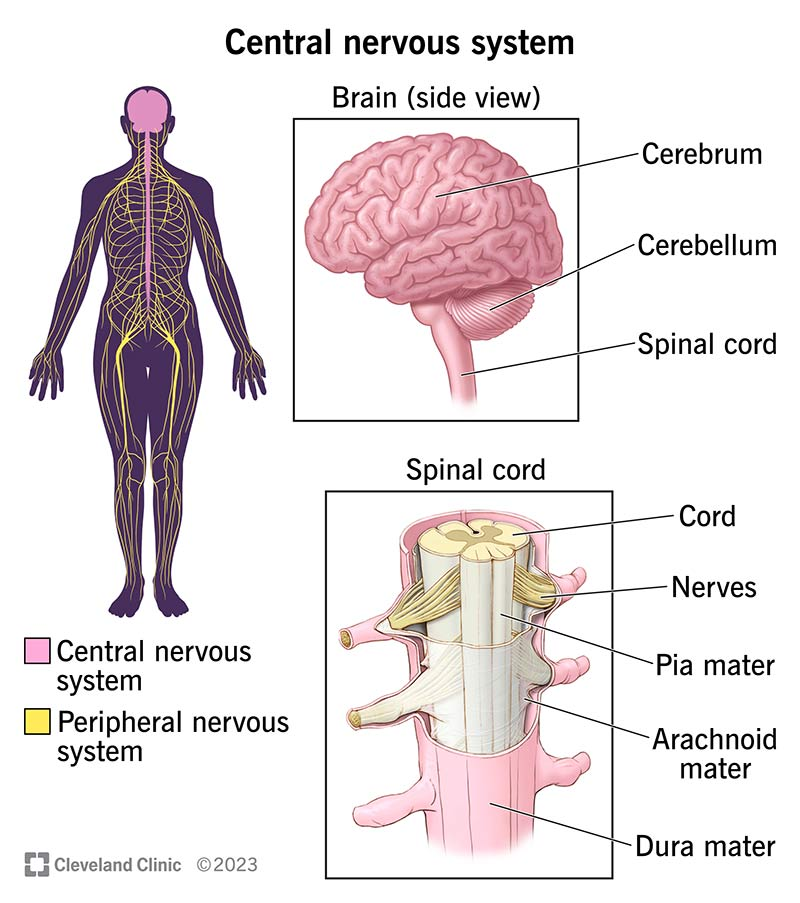The Central Nervous System (CNS) is the primary control center for the body, responsible for processing and integrating information from the peripheral nervous system (PNS) and coordinating bodily functions. It consists of two main components: the Brain and the Spinal Cord.

Structure and Function
The CNS is just the Brain and Spinal Cord, but those two components are themselves comprised of several important parts.
The Brain
We distinguish between the Cerebrum (the largest part of the brain, responsible for higher cognitive functions like thinking, memory, and voluntary movement) and the Cerebellum (located at the back of the brain, responsible for coordination, balance, and fine motor skills). There is also the Brainstem, which connects the brain to the spinal cord and controls basic life functions like breathing, heart rate, and sleep.
The Spinal Cord
The spinal cord is a long, cylindrical structure that extends from the brainstem down through the vertebral column. It serves as a conduit for transmitting information between the brain and the rest of the body. The spinal cord is protected by the vertebrae and is surrounded by cerebrospinal fluid, which cushions and nourishes it.